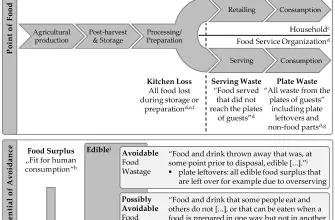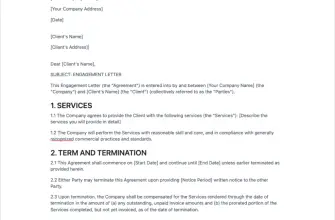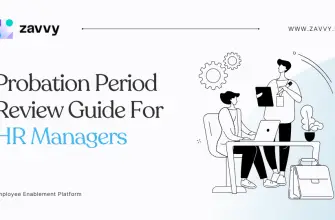Businesses face several risks and challenges during Employee Relocation regardless of the motivation for the move (whether it be to save money or be closer to consumers).
While minimizing legal risk and keeping costs in check, keeping essential employees and morale high among the rest of the staff during the relocation process should take precedence. Because of this, you need to take a strategy that respects employees’ relocation rights while also being sympathetic to their worries and skepticism.
What is Employee Relocation?
When a business chooses to relocate employees to a new location, either to take advantage of better job opportunities or to bring in new hires, this is known as employee relocation. For expansion, many companies transfer their workers to different departments or subsidiaries.
Moving to a new location can be difficult and emotional for workers because it may mean leaving familiar places and people behind. For this reason, businesses have developed elaborate relocation policies to lessen the possibility of losing valuable employees.
For what reasons would an organisation have to transfer workers?
There are many causes for an organisation to relocate an employee.
- The employee will be relocated closer to the primary office to collaborate more efficiently with coworkers.
- To transfer the individual to a department with an immediate need for their expertise.
- When a company establishes a branch office in a different location, some or all of its employees may be relocated there.
- Transferring an employee to a new location hopes they will be happier and more effective there.
What are workers entitled to in terms of Employee Relocation Rights?
The planned aspect is if they have not, they have a “mobility clause” in their job contract. If that’s the case, the worker must find new employment unless the demands are absurd.
The criteria for what constitutes an “unreasonable” action are not specified. Consider whether the employee’s quality of life will suffer due to the move—things like arranging for childcare, commute time, etc.
Remember that what one worker considers fair may not be acceptable to another.
Moving overseas is much simpler for a single man in a rented home than for a family with young children and a mortgage.
If the worker has been on the job for two years or more and you make a change they find unreasonable, they may sue you for constructive discharge.
Avoid these types of lawsuits by giving impacted workers written notice of the relocation. Contact them and explain the consequences of not making any moves.
What Constitutes a “Reasonable” Employee Relocation?

There is no hard and fast answer to questions like “what is a reasonable distance for relocation?” because no one accepts the description of what constitutes an unreasonable move. Because each worker has unique dependents, housing circumstances, and personal responsibilities, only some workers will agree on a fair work arrangement.
It’s crucial to consider how relocating an employee will affect their standard of living. It’s more likely to be deemed irrational if moving would reduce their standard of living and overall happiness.
Several Varieties of Overseas Transfer or Employee Relocation
There are three main categories of moving: temporary, permanent, and temporary trips. It’s important to know what kind of relocation you’re up against when an employer is located in one nation, and an employee plans to work from another.
Temporary move
When an employee is transferred to another nation temporarily for work, they become a legal resident of that country rather than a visitor. Short-term relocation is distinguished from long-term relocation because the individual only moves for a limited time. When an employee moves to the area, things get more complex.
Moving away to go sightseeing
No matter how long your trip is—a few months or a year—there is always a deadline. Visitors and company passes are the most ordinary papers needed for the journey. The employee’s work authorisation is limited to the scope of the visa they possess.
Permanent transfer
Long-term migration means that an employee will be relocating for an extended period. This can last for a year or two or forever if necessary. The primary distinction between temporary and permanent relocation is the absence of a definitive departure date. Employees who relocate for an extended period are considered residents of the host nation. Long-term relocation concerns can involve immigration, foreign taxation, and local labour law issues.
No matter how long an employee works abroad, you should know the local laws affecting your business partnership.
Incentives for workers to relocate
Relocation packages can be used as an incentive to lure workers, especially high-ranking ones, to a new location. Relocation incentives for employees typically consist of one or more:
- A salary raise,
- A better position within the company,
- Or both.
Your transfer offer should consider the employee’s potential financial and time commitment changes due to the move. Depending on the circumstances, this could mean paying for a moving company or helping the employee’s partner find a job there.
What should I expect from an Employee Relocation plan, and what does it include?
High moving costs are typically reimbursed by employers regardless of the size of the transfer package. When designing your moving assistance program, keep the following expenses in mind.
- Employees who are house hunting in a new city should be reimbursed for incidental costs like temporary lodging, transportation, and meals. During relocation, some businesses will even cover the cost of daycare.
- Cover any other expenditures that arise as a result of your move. Washing machine costs, new phone line setup fees, and appliance setup are all examples of expenses you could give.
- Companies typically pay workers to pack, move, store, and unpack household goods. However, you may include exceptions for cleaning, repairing, purchasing fixtures for a new property, assembling furnishings, and removing fixtures from the old property.
- Expenses associated with leaving a rental property before the end of the lease period should be covered by the transferring tenant.
- Expenses associated with relocating to a new home include broker commissions, inspection fees, and setup charges for a new mortgage.
- Employees and their dependents or family members should be reimbursed for personal expenditures such as transportation, lodging, and food.
- Help sellers cover hiring a real estate agent and paying for legal representation.
Relocation programs cover these costs and provide other forms of assistance. Some businesses, for instance, will help their spouses find work, offer telephone therapy, and supply newcomers with resource guides. Provide detailed guidelines to help workers make the most of their relocation benefits.
How do transfer subsidies work, and who gets them?
There is no universal best way to relocate. Several variables influence an organisation’s decision regarding a relocation assistance program.
These bundles include:
- This relocation benefits plan provides workers with a lump sum of money to cover moving costs. This benefit allows workers some leeway in spending money during a move by giving them a predetermined amount from their employer.
- Relocation packages reimburse workers for their out-of-pocket costs. Workers are expected to cover all relocation costs before submitting reimbursement claims. Reimbursement caps are a sensible precaution for some businesses to take.
- All moving costs are taken care of in this all-inclusive relocation plan. These benefits are usually reserved for the company’s top executives.
- Compensation packages are tiered to account for workers’ years of service, seniority, and family size. An entry-level worker will be offered different perks than a vice president.
How much do companies typically pay their employees to relocate?
It can be costly for companies to move a worker. According to USA Transfer Associations (ARC), a company transfer association, the moderate expense of a transfer package is approximately $19,300 and $24,200 for tenants and is approximately $72,625 and $97,115 for owners. The range is different for fresh hires than for long-term employees.
Companies can estimate and even lower an employee’s ultimate cost of a relocation package in several ways. In developing relocation budgets, businesses can gauge potential costs by factoring in the following staff outlays:
- Get yourself to the new place.
- Coverage for your move
- Inclusion of Benefits in Tax Base
- Taxes for moving
- Temporary lodging
- Assistance with Packing and Moving
- Containers, sheds, and other short-term storing options
- Buying or selling a house
Almost everything on that list is obvious, but “relocation tax gross-up” might not be. When a boss adds back the employee’s share of taxes from a payment, they are said to have “grossed up” the price. This avoids a financial burden on the worker. The Tax Amounts and Jobs Rule of 2017 primarily eliminated transfer cost tax immunities and assumptions. Relocating costs more now than before because of these reforms, which also did away with the IRS’s 50-mile regulation.
Legislation about employee relocations
Employees have the right to a written summary of the essential conditions of their employment.
The person’s regular location of employment must be mentioned in this declaration. Check the employment contract for a “mobility clause” if you plan to move the team later.
The clause typically states that the company requires the employee’s relocation and is a condition of their employment.
Locations will be within a certain distance from the employee’s regular place of employment, for example.
You can depend on a mobility clause to compel employees to relocate where the law requires. Unless, of course, the move is excessively disruptive.
The facts of each situation determine what is or is not the case. Timeframes for relocation are one example of a factor that can be considered.
- Timeframes
- Effect on the worker.
- Distance.
- The expense of moving.
The mobility clause or a distinct relocation policy may outline incentives for your team’s relocation. The clause may call for your assistance in moving, either monetarily or otherwise. Relocation packages typically include monetary compensation.
Expenses like gas or a few days’ rent will be covered. However, it can investigate other aid, such as directing the worker to a mortgage guidance resource.
The positive effects of staff relocation on the worker
Whether an employee moves because they want to or because their company requires it, the experience can be rewarding on many levels. Some of the significant advantages are as follows:
Enhanced standard of living
A transformation of view can do marvels for the morale of an entire workforce. It also allows them to leave a job that is either too stressful or challenging.
Possibilities for professional advancement in Employee Relocation
When an employee relocates, they may be able to take advantage of better job prospects. An employee’s skill set can be boosted by a move to a new city or even a new nation. It may also assist them in making new contacts.
Can a worker reject a relocation?
The boss should proceed cautiously if there is any indication that the employee may view the relocation unfavourable. Without considering the employee’s position, relying on an explicit or implied provision in the contract is likely to constitute a breach of trust and confidence, which could lead to a constructive dismissal claim. There must be justice in this. This includes providing the worker written notice of the planned move and its rationale and evaluating their concerns in good faith to see if they can be addressed. Even if the boss is free to demand the transfer, it cannot be forced. For this discussion, we will set aside whether relocating an employee against his will makes sense. Will the employee be satisfied with his job prospects in the new location if he decides to relocate solely to avoid being fired without pay?
If this doesn’t work, the employer can legally propose firing the worker for redundancy if there’s no work to be had in the current location or for “some other substantial reason” if the business needs to justify the need to relocate, but the worker refuses to comply. While an employee’s refusal to abide by an explicit mobility clause may constitute misconduct, this is usually not a valid defence unless there is no legitimate reason for the employee to refuse the move.
When creating a company relocation strategy, what part should HR play?
To facilitate strategic company development, human resources teams in charge of employee relocation programs collaborate with the business and finance departments. That’s why they play a crucial part in the relocation administration process.
Managers of relocation and movement typically handle the following responsibilities within human resources:
- Conceive, develop, and administer policies in collaboration with senior business leaders and functional heads of departments and divisions.
- Choose vendors: compile a list of outside service providers who have earned the confidence of your staff.
- Participate in the legal process by helping the legal team spot problems and providing information on tax and visa issues.
- Collaborate with superiors to pinpoint workers who would benefit from internal transfers.
The Human Resource division’s leading objective is to offer strategic individuals value to the business. Before relocating workers, organizations should perform a strategic, operational, and financial analysis of relocation initiatives.









